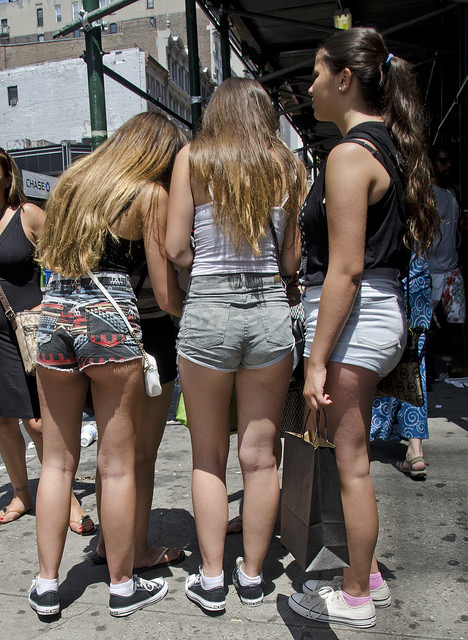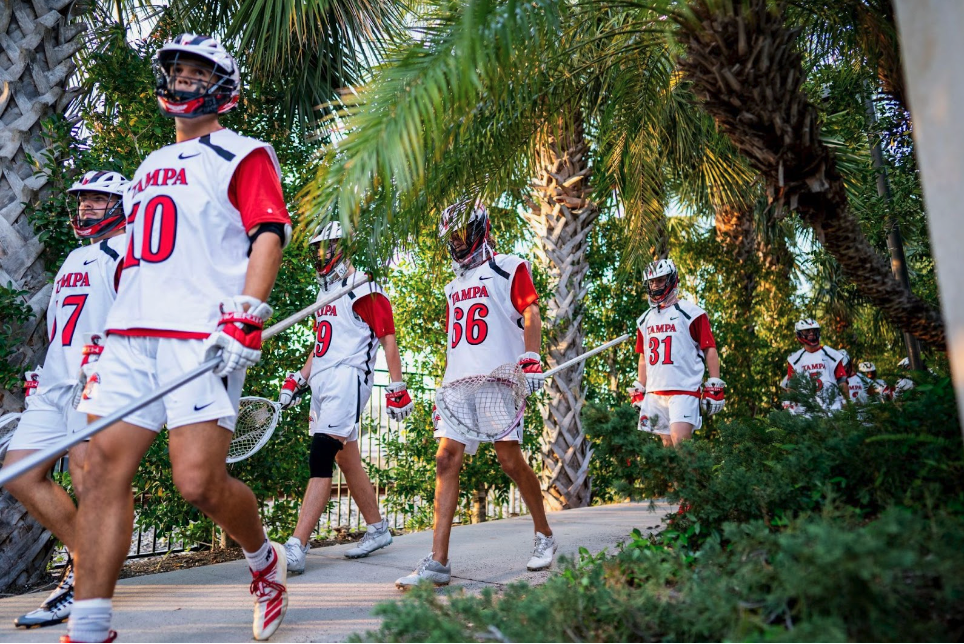By ARIEL HERNANDEZ
News Writer
After working five years at the University of Tampa as an English professor, Erica Dawson found herself in an uncomfortable situation one warm afternoon when a female student entered her English class in what Dawson describes as extremely distracting to the learning environment.
“She was wearing a two-piece bathing suit,” Dawson said, “without a cover-up.
I just can’t think of a situation in which that could be okay. I don’t think I know someone who would be okay with it. There was even a reaction from the students.”
Dawson, who says she would have reacted the same way had it been a male student, asked the girl to go back to her room to change. The student was receptive, left to change, and came back to class.
“It would be difficult to do my job and for other students to pay attention with a student in a bathing suit in the classroom,” Dawson said.
Southern universities have been experiencing an increase in the lack of clothing worn by college girls.
Dress codes in colleges have been a recurring controversial topic for years because it allegedly violates students’ First Amendment right to freedom of expression.
The first dress code law was established in 1969 by the U.S. Supreme Court in the case of Tinker vs. Des Moines Independent School District, according to education.findlaw.com. Although this was a high school based case, the court decided that schools are allowed to limit student expression by implementing dress codes that prohibit clothing that is vulgar or disrupts academic activity.
Article 19 of The University of Tampa’s Student Handbook states, “All students must wear upper and lower garments and shoes or sandals at all times in the following places: all academic buildings, University offices, Plant Hall, Vaughn Center, Frank and Carol Morsani Hall, Macdonald-Kelce Library and Falk Theatre. Nudity is not permitted outside of private residence hall rooms or locker rooms, unless academically required.”
Dawson’s view on how a student should be dressed in an academic setting is different from what the dress code says because to her, a student should dress as they would if they were working in an office.
However, Dawson isn’t the only one questioning the Student Handbook. In a sit-down interview with UT’s Vice President for Operations and Planning, Linda Devine, she found the school’s mission contradicting itself.
The first article dealing with personal integrity reads, “In the spirit of mutual respect for all members of the University community, the Spartan Code has been created to outline the expectations of what it means to be a Spartan.”
“In the spirit of mutual respect,” Devine repeated to herself. “Is a student showing up to class in a distracting outfit showing respect to the professors or other people in the room? It has nothing to do with taking away your freedom to wear what you want but our primary purpose is teaching and learning and we can’t let stuff get in the way of that. It draws from our mission.”
After thinking about the issue, Devine said she plans on bringing up some questions pertaining to UT’s dress code and the other supporting articles within the student handbook to the student body to implement stricter rules on what students should wear in an academic setting.
“You know there is a problem when it’s not just faculty but students reacting,” Devine said.
After completing two years at a local community college in Staten Island NY, transfer business major Alyssa Chappe was in for a surprise her first week at UT.
Chappe said that the student was wearing a dress that looked like a shirt.
“It was a baby blue floral spaghetti strapped dress that ended a little below her pelvic area,” Chappe said. “I looked at the girl sitting next to me and said, ‘I think she left her pants home’.”
Considering that Florida is so hot, it’s a factor towards why students wear minimal clothing.
Dr. David Wheeler, a journalism professor at UT who previously worked at Asbury University in Wilmore, KY, is all for students being allowed to choose what to or not to wear to class.
“The school where I came from was a private school that did not offer much freedom of expression,” said Wheeler. “The dress code was extremely strict and for that reason I moved towards the idea that people should have the right to wear what they want.”
While there are professors who are for freedom of expression at a university, there are others that feel students should know when it is appropriate to express themselves in different settings.
“I agree they [students] are adults and can choose their own clothes,” Dawson said. “But there’s a difference between what they wear to class and what they wear to Ybor on a Friday night. Some women could be more modest. The shorts with your cheeks out are not the best look for the middle of the day.”
Dawson isn’t the only one who feels what you wear outside of the classroom should be different from what you were in a classroom in efforts to avoid distraction.
Omar Rodriguez, junior physics major at UT, says students wearing minimal to no clothing is disrespectful to the learning environment.
“Bottom line is you’re not at the pool or at a random frat party,” Rodriguez said. “It’s a classroom, so there should be a sense of professionalism.”
When a trend is problematic, there are usually people whom hope to enact stricter rules to prevent the trend from escalating.
“I’ve been working at UT for five years and I’ve noticed the clothing has gotten smaller since I’ve been here,” Dawson said. “I could see myself implementing a dress code in my syllabus years later.”
Ariel Hernandez can be reached at ariel.hernandez@spartans.ut.edu





Leave a Reply